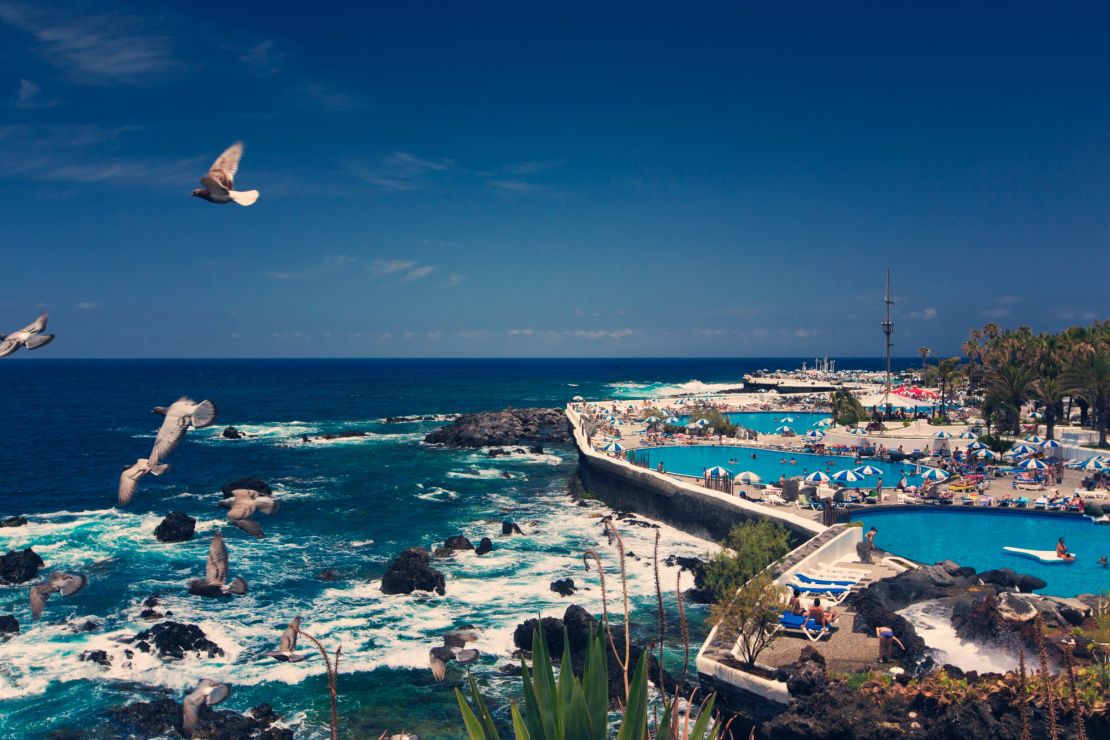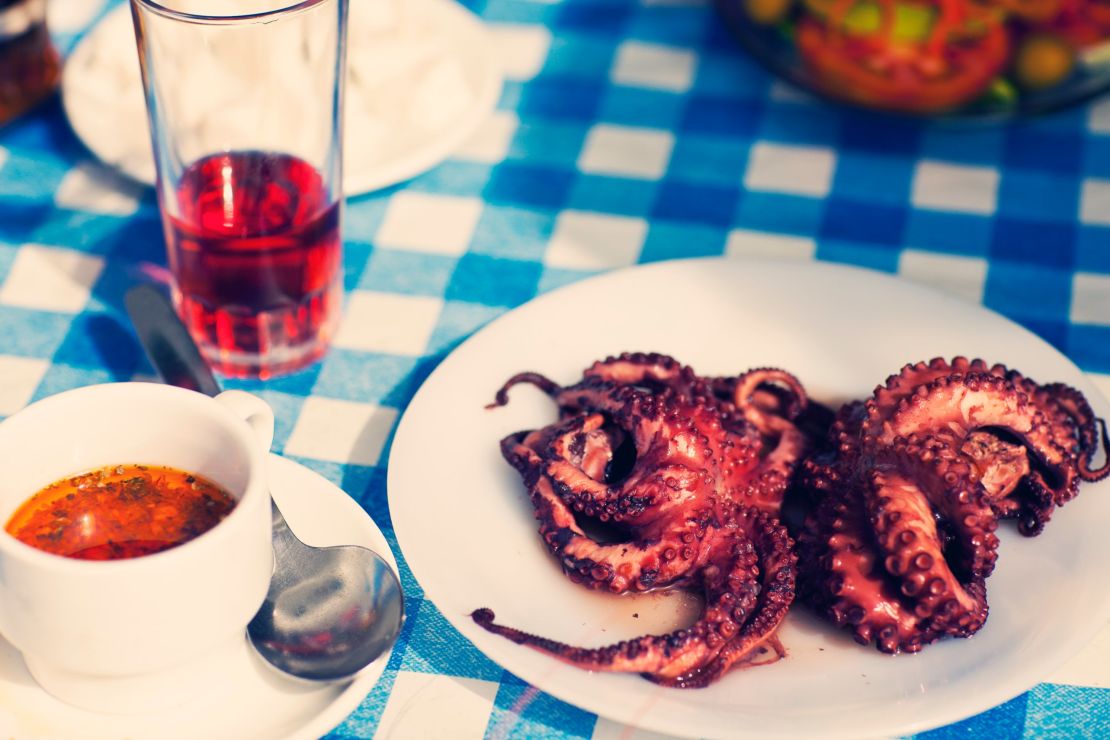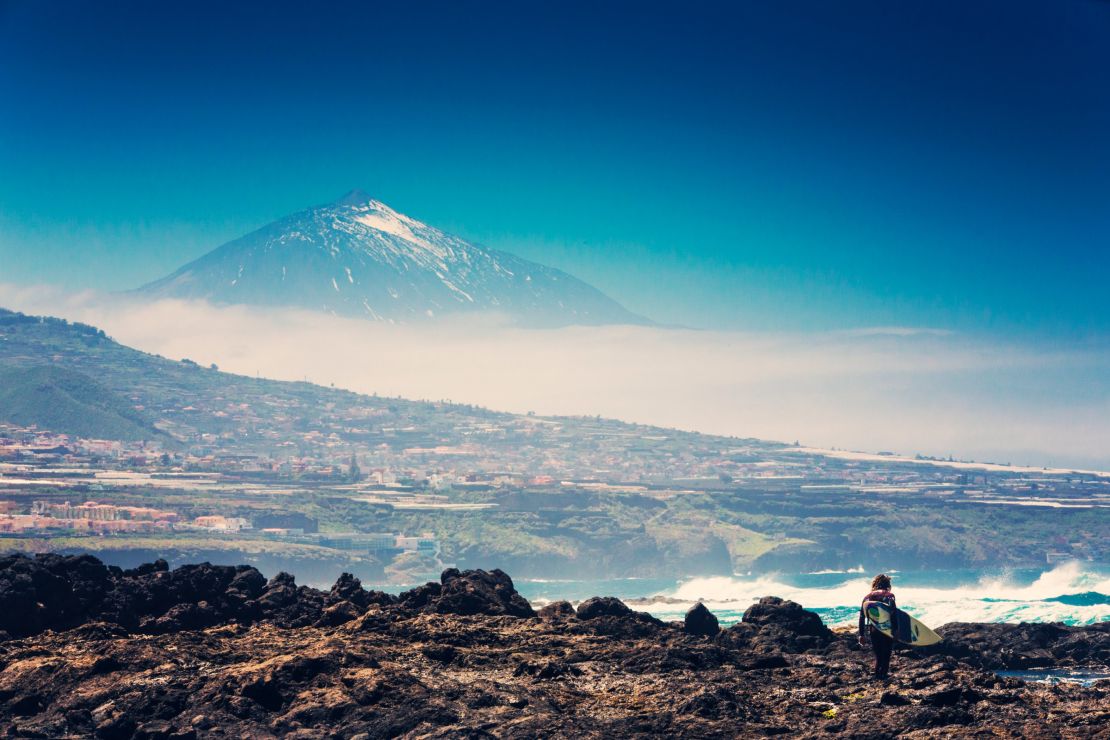By the time I reach the base of the mountain, my legs are already beginning to give out on me.
Orange-colored dust flies upward then settles again, revealing Mount Teide, an active volcano that at 3,718 meters (about 12,200 feet) is the tallest peak in Spain. From any angle Teide, which last erupted in 1909 is startling, even the white fog that shrouds its peak cannot hide its enormity.
A two-hour flight from Madrid has taken me to Tenerife, the island 300 kilometers (186 miles) off the coast of West Africa that sprung from the ocean floor 10 million years ago because of a volcanic eruption.
For three days, I explore a destination with a landscape more varied than its 2,000-square-kilometer area suggests.
Tenerife is the largest and most populous of the seven Canary Islands, with more than 5 million tourist visits each year.
This number is due in part to the “something for everyone” dynamic the island presents. In less than an hour, it’s possible to travel from a lush, subtropical rainforest to volcanic terrain.
Natural wonders
Tenerife’s vibrancy rests in its untouched, natural splendor. The country’s isolation on the Atlantic Ocean has allowed for an interesting evolution in biodiversity.
It’shome to 50 endemic species, including five of seven remaining species of turtles in the world, the Canary Cleopatra butterfly and yes, even an eyeless cockroach.
Conservation is a top priority on Tenerife; 48 percent of its land is protected. And at nearly every turn, there is some natural wonder to marvel over.
The southern part of the island is home to between 500 and 600 pilot whales that boats can take visitors to watch.
In the resort town of Los Gigantes, startlingly large cliffs drop into the ocean.
In mountainous areas visitors can walk above a sea of clouds, a natural phenomenon caused by trade winds.
In the harbor town of Garachico, neat cobbled streets link palm-lined plazas, and the natural lava rock pools in the bay are filled with crashing seawater.
North vs. south

While the arid stretches of southern Tenerife attract beach lovers to its high-rise resorts, cooler temperatures, subtropical forests and tranquil towns characterize the north of the island.
The capital, Santa Cruz de Tenerife, is a northern port town with churches that have stood since the 16th century.
In February, the town comes alive for Carnival, with revelers in fancy dress taking to the streets to drink and dance until the early morning.
Less than a mile away from Santa Cruz, the cobblestone pathways in the town of La Laguna are lined with everything from boutique shopping, museums, to local art galleries. It’s also home to some of the island’s most historical buildings and only university, Universidad de La Laguna.
Tenerife also offers 70 beaches, so the question becomes not which one to visit, but which type.
On El Bollullo’s beaches in the north, cascading green cliffs and bountiful banana plantations lead to a sea of black pebbles glowing on even blacker volcanic sand.
For golden beaches and bodies, the main town of Adeje on the southern coast is the place to be and be seen.
Ancient recipes

While simplicity of flavor is the hallmark of Canarian cuisine, Tenerife gastronomy celebrates locally produced ingredients that fuse the best of traditional and contemporary recipes.
In quaint, hillside restaurants around the island, many which were once homes, time-old family recipes bring memories to life.
One restaurant that perfectly captures this tradition of flavor and family is El Calderito de la Abuela, which translated means, “Grandma’s cooking pot.”
Chefs and brothers Fabian and Mario Jr. Nunez have taken their grandmother Gregoria’s recipes and created an atmosphere that keeps locals at their tables and fresh, traditional Canarian food at the forefront of their operation.
Their dishes include fried goat cheese covered with palm honey and mojo, thin and crisply fried onion rings called “cebollitas,” and conejo al salmorejo – a tender and flavorful rabbit stew.
Sense of scale

Perhaps Tenerife’s greatest wonder, though, is Mount Teide.
It’s a UNESCO World Heritage Site that experienced adventurous hikers can climb with written permission.
A cable car called “El Teleferico” can also whisk visitors to the top in eight minutes. And while the volcano dwarfs everything else on the island, from its summit there’s an even greater sense of scale.
Low levels of light pollution mean it’s a perfect spot for gazing into vast star-filled skies.
Kristin Braswell is a freelance writer and wanderlust. She’s contributed to Essence, ABC News, NPR and Ebony, among others.














